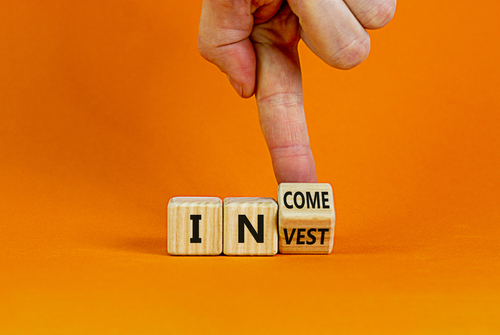From the stories of Wall Street’s daring traders to the tales of the individuals who invested their life savings in a startup that transformed into a tech giant, the landscape of investing is replete with legends of fortunes made and lost. At the heart of these narratives is a dance between two entwined partners: risk and reward. While the allure of substantial returns often captures our attention, it’s equally vital to understand and respect the risks associated. Investing, in its essence, is about making informed choices, understanding potential pitfalls, and harnessing opportunities for growth.
Navigating the investing realm requires more than just market knowledge; it demands an astute understanding of one’s own risk tolerance. Recognising this balance can be the distinguishing factor between a novice and a seasoned investor. And as we delve deeper into this comprehensive guide, we will unravel the intricacies of this delicate balance.
The Pillars of Risk Assessment

Risk, in the context of investing, isn’t just about the possibility of losing money; it’s about understanding the unpredictability of returns. Different assets have varied risk profiles, with some prone to sharp fluctuations while others remain relatively stable. Assessing risk involves a suite of methods ranging from the use of historical data to the measurement of variance and standard deviation. By understanding metrics such as beta (indicating an asset’s volatility in relation to the market) and alpha (highlighting an asset’s performance against a benchmark), investors can glean insights into potential investment dangers.
Yet, the risk assessment doesn’t end with just numbers. External factors such as geopolitical tensions, economic policies, and even sudden market sentiments play pivotal roles. To be truly adept at gauging risk, one must constantly be attuned to the broader world, recognising that investments exist within a dynamic, ever-shifting landscape.
Recognising Potential Rewards
In the golden glow of successful investments, the rewards manifest as tangible benefits: impressive ROI, lucrative dividend yields, and commendable capital appreciation. Yet, recognising these rewards requires more than just an eye for detail. It’s about understanding market dynamics, acknowledging the hidden potential of undervalued assets, and foreseeing sectors poised for exponential growth. Investments with higher potential returns often come tethered to heightened risks—a truth that underscores the essence of the risk-reward balance.

It’s not enough, however, to merely identify opportunities. The art of investing lies in timing, in knowing when to enter a market and when to exit. With an ever-evolving global financial landscape, from traditional stocks to the recent prominence highlighted by Bitcoin news, staying updated and agile is paramount. Rewards are not just fruits of labour but also of knowledge, strategy, and informed action.
Modern Investment Avenues and Their Risk Profiles
The investment realm, vast and varied, offers a myriad of avenues, each with its distinct set of risks and rewards. Traditional stocks, for instance, have been a cornerstone of investment portfolios for ages. While they offer the potential for capital appreciation, their value can be influenced by corporate performance, market sentiments, and broader economic indicators. Bonds, often deemed safer, promise fixed returns yet are susceptible to interest rate fluctuations and the creditworthiness of issuers.
On the other hand, real estate investments offer tangible assets but come with challenges like liquidity constraints, maintenance costs, and potential market downturns. Then, there’s the intriguing world of cryptocurrencies led by Bitcoin. Its recent news has showcased its volatility but also its potential for remarkable returns. Staying updated with platforms like Bitcoinist for the latest Bitcoin news today can be crucial in this digital currency frontier. Each avenue demands a unique strategy, underscoring the importance of diversifying one’s portfolio to balance out potential risks.
The Role of Diversification in Balancing Risk and Reward
If investing were a symphony, diversification would be its harmonious chorus. By spreading investments across a range of assets, investors can mitigate potential losses in any one avenue. Think of it as a safety net, cushioning the impact of unpredictable market downturns. For instance, during an economic slowdown, while stocks might underperform, bonds or gold might hold steady or even appreciate.
However, diversification isn’t about mere quantity; it’s about quality and strategy. It’s not just adding more assets but integrating assets that are uncorrelated or inversely correlated. This ensures that when one asset underperforms, another might compensate. The objective is to create a portfolio where the combined risk is lower than the individual risks of the assets within it. It’s a meticulous craft, aligning investment goals with market dynamics and personal risk tolerance.
Emotional Intelligence and Decision-making in Investing

Investing is more than just numbers and data; it’s an intricate blend of logic and emotion. But herein lies a potential pitfall: allowing emotions to overshadow rational decision-making. Take, for instance, the euphoria of a bull market or the despair during a market crash. These heightened emotions can lead to hasty decisions—buying at a peak or selling at a rock-bottom low.
It’s crucial, then, to cultivate emotional intelligence in the world of investing. This means being self-aware, recognising one’s emotional triggers, and developing the resilience to stay the course during market upheavals. A well-researched strategy should serve as the North Star, guiding decisions even when the waters get choppy. As enticing as the latest BTC news might be or as alarming as a sudden market downturn can appear, decisions grounded in research and long-term objectives stand the test of time.
Final Thoughts
The journey of investing, marked by its highs and lows, is akin to traversing a dynamic landscape. Each decision, each step, is informed by a blend of research, intuition, and experience. Yet, at the core of this journey is the eternal interplay between risk and reward, each influencing the other in an intricate dance. To tilt the scales towards success means understanding this balance deeply, respecting the risks, and being nimble enough to seize the rewards.
As we reflect upon the myriad avenues of investment, the importance of diversification, and the crucial role of emotional intelligence, one truth stands out: investing is both an art and a science. It demands of us not only technical acumen but also the emotional resilience to navigate market tumults. Staying informed, whether through traditional financial news or platforms like Bitcoinist for the latest cryptocurrency updates, is but a part of this vast mosaic.
In the end, mastering the balance between risk and reward isn’t about achieving perfection but pursuing excellence consistently and tenaciously. In this pursuit, we not only grow our wealth but also enrich our understanding of the market’s vast tapestry.





